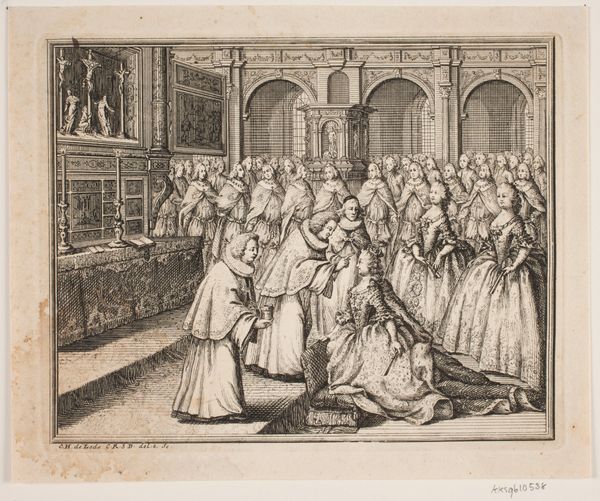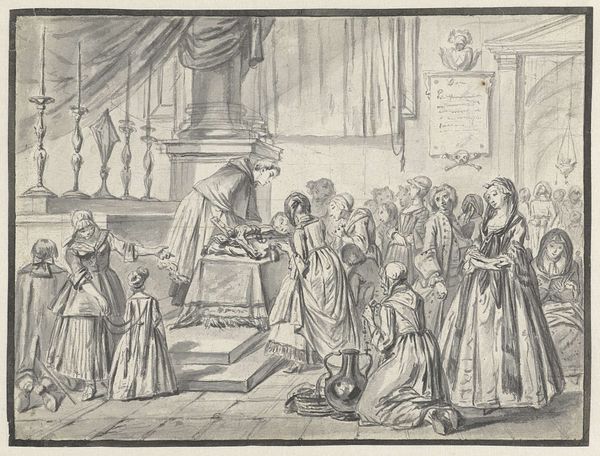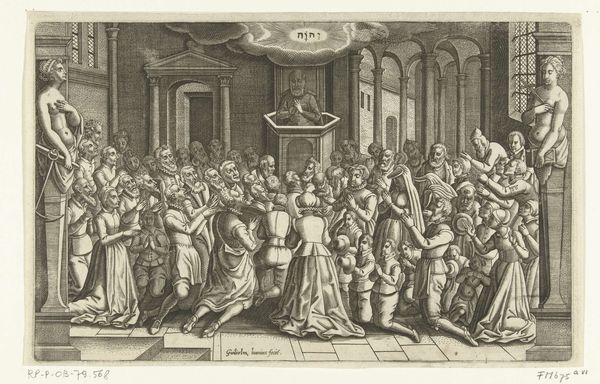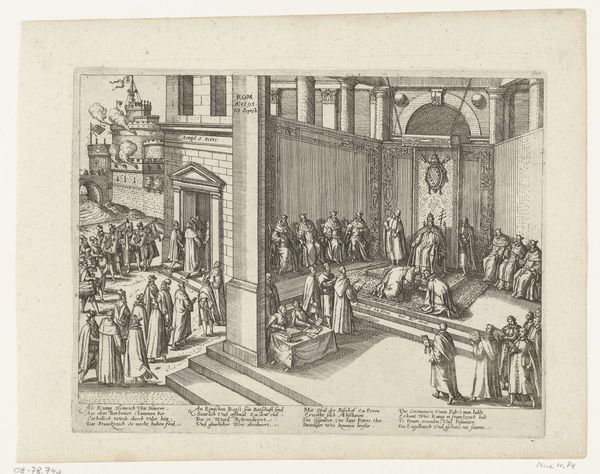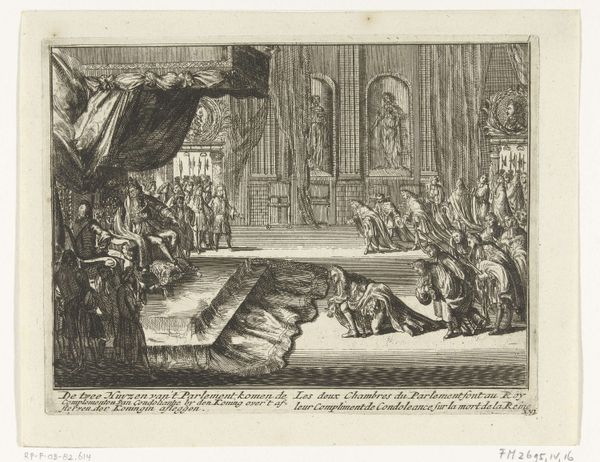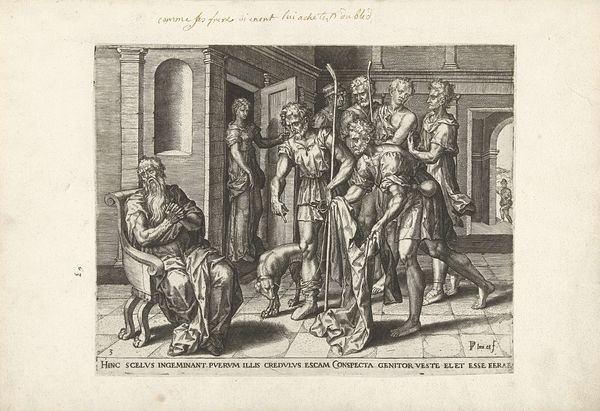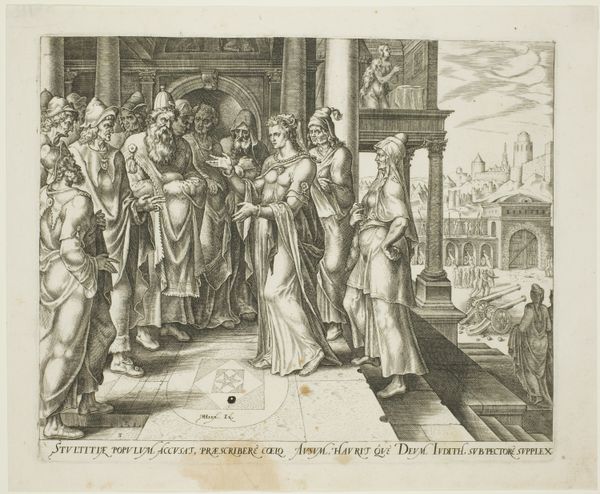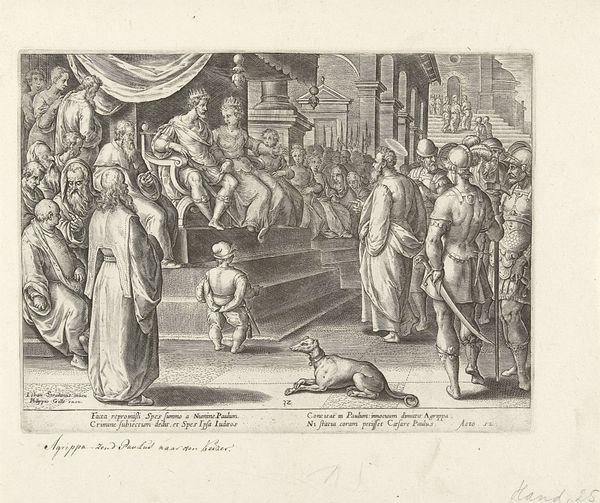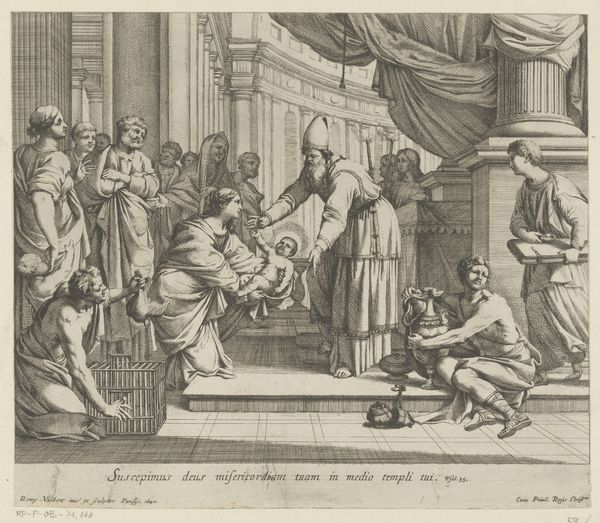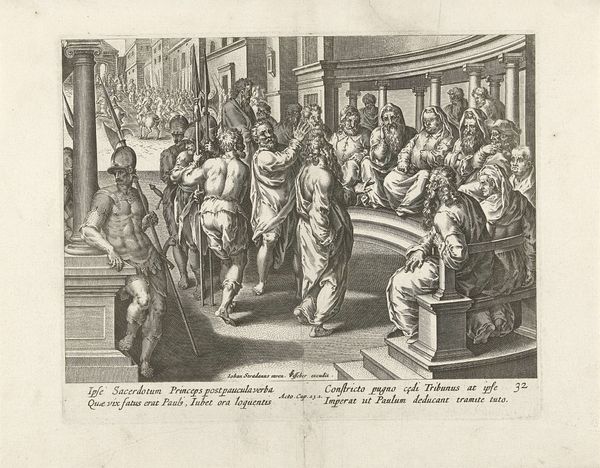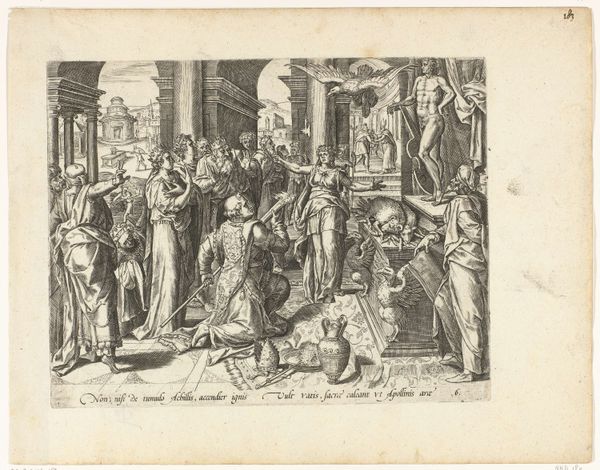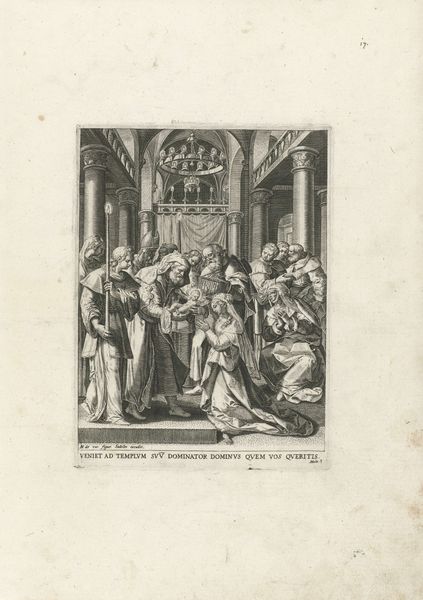
Biskop Hersleb salver Kong Frederik V i Frederiksborg Slotskirke. Illustration til Frederik d. IV's salvingsakt 1726 - 1757
0:00
0:00
print, ink, engraving
#
portrait
#
ink drawing
#
baroque
# print
#
ink
#
history-painting
#
engraving
Dimensions: 116 mm (height) x 147 mm (width) (plademaal)
Editor: This engraving, "Biskop Hersleb salver Kong Frederik V i Frederiksborg Slotskirke. Illustration til Frederik d. IV's salvingsakt," made between 1726 and 1757 by Odvardt Helmoldt de Lode, depicts a historical event with incredible detail. It almost feels like a stage production, carefully choreographed. What do you see when you look at this print? Curator: I see a fascinating confluence of power, faith, and material culture, all mediated through the labor-intensive process of engraving. Look at the sheer amount of detail rendered by hand—the clothing, the architectural ornamentation, the very bodies involved. Each line represents someone’s work, contributing to a symbolic product designed to reinforce the authority of the monarchy and the church. How was this image likely circulated, and who would have consumed it? Editor: I imagine this print would have been pretty exclusive, distributed among the nobility and clergy. It seems intended to document and maybe even glorify the event. Curator: Precisely. Think about the resources—the engraver’s skill, the paper, the ink, the patronage—all concentrated to produce this object. It’s not just a picture; it’s a material manifestation of power relations. Consider, too, how the repetitive act of engraving mirrors the rituals of the church and the court, all reinforcing a particular social order through carefully constructed displays. The line work becomes a sort of commodity itself, reflecting the worth attached to documenting such events. Editor: That’s a really interesting perspective. I hadn't considered the labor involved as a key element of the work’s meaning, beyond just the depiction of the event itself. Curator: Exactly. It asks us to move beyond admiring the image and consider the entire network of production that made it possible, connecting artistic skill, religious authority, and royal power. These prints served as replicable objects through which power could be both witnessed, distributed and, even consumed. What we learn about labor and making help us view power critically.
Comments
No comments
Be the first to comment and join the conversation on the ultimate creative platform.
